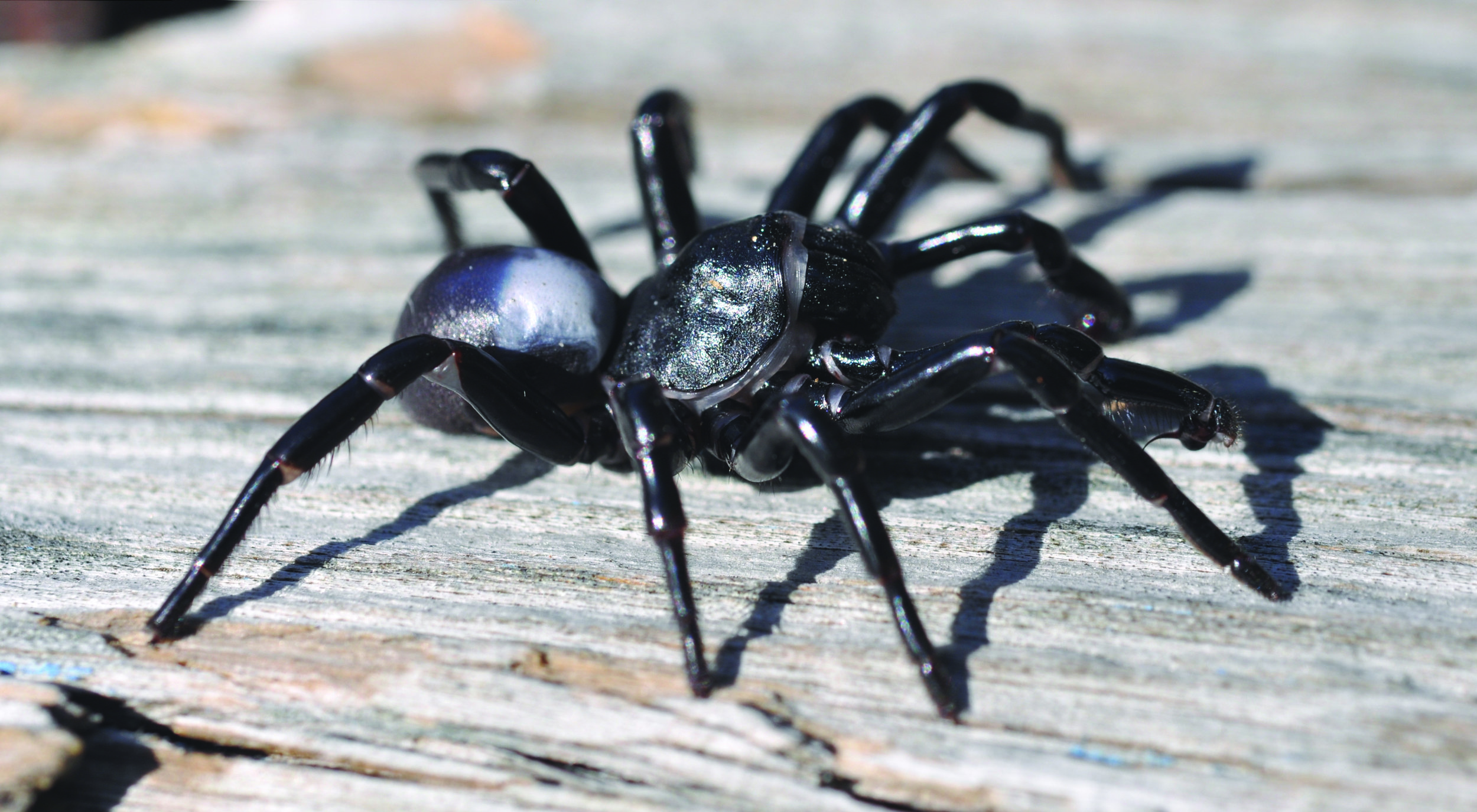Year of the Spider: Trapdoor Spiders
Concluding N.C. State Parks’ Year of the Spider, the last group of spiderswe will explore are the trapdoor spiders. These members of the Ctenizidae family get their name from the “doors” they construct to cover their burrows. Female trapdoor spiders, like other spider species, are larger than their male counterparts. Ranging from 1-inch to nearly 3 inches in size, trapdoor spiders are heavy-bodied, with relatively short, robust legs. Trapdoor spiders are not brightly marked like our crab or jumping spiders. They are typically black and hairless, which makes them appear more like a shiny plastic toy than a live animal.
What they lack in colorful appearance, trapdoor spiders make up for in the way they hunt. Imagine walking through the forest around Lake James, searching for food, or a place to hide. You’re a forest floor cruising insect, like a beetle, or a cricket. Suddenly, a flash from the corner of your eye and something grabs you. As quickly as you were grabbed, a small door shuts and you’re plunged into darkness. You’ve been grabbed by a trapdoor spider and while you’re invited for dinner, you aren’t a guest, you’re dinner. Female trapdoor spiders construct vertical borrows in which they lay in wait for their next meal. The trick to catching their prey off-guard is a small, 1-inch round door, camouflaged with surrounding ground litter. Under this trapdoor, the spider waits for its next meal to walk close enough to pounce on.
Traditional, large web-building spiders can be easy to find as you walk the trails at Lake James. Trapdoor spiders are much harder to see. They hide underground in burrows with camouflage trapdoors after all. With that said, trapdoor spiders can be observed if you look for them at the right time. The male spiders spend most of their time hunting on the forest floor for various insects. The females are best searched for after a hard rain. Being burrowdwellers, the females are often driven from hiding when the burrow fills up with water.
Little is known about the life-cycle of the trapdoor spider. Most spider species in North Carolina live less than a year. They become sexually mature in the first half of the warm season, breeding in mid- to late summer and then dying as temperatures cool in late fall. It is theorized that because of their robust size, trapdoor spiders can live multiple years, like tarantulas.
Trapdoor spiders are arguably one of the most fascinating spiders found in North Carolina. They aren’t commonly encountered, but when they are, they are a fantastic addition to any hike. So, the next time you find yourself hiking in the park after a rain, keep an eye out on the forest floor, you may see one of these impressive spiders.

